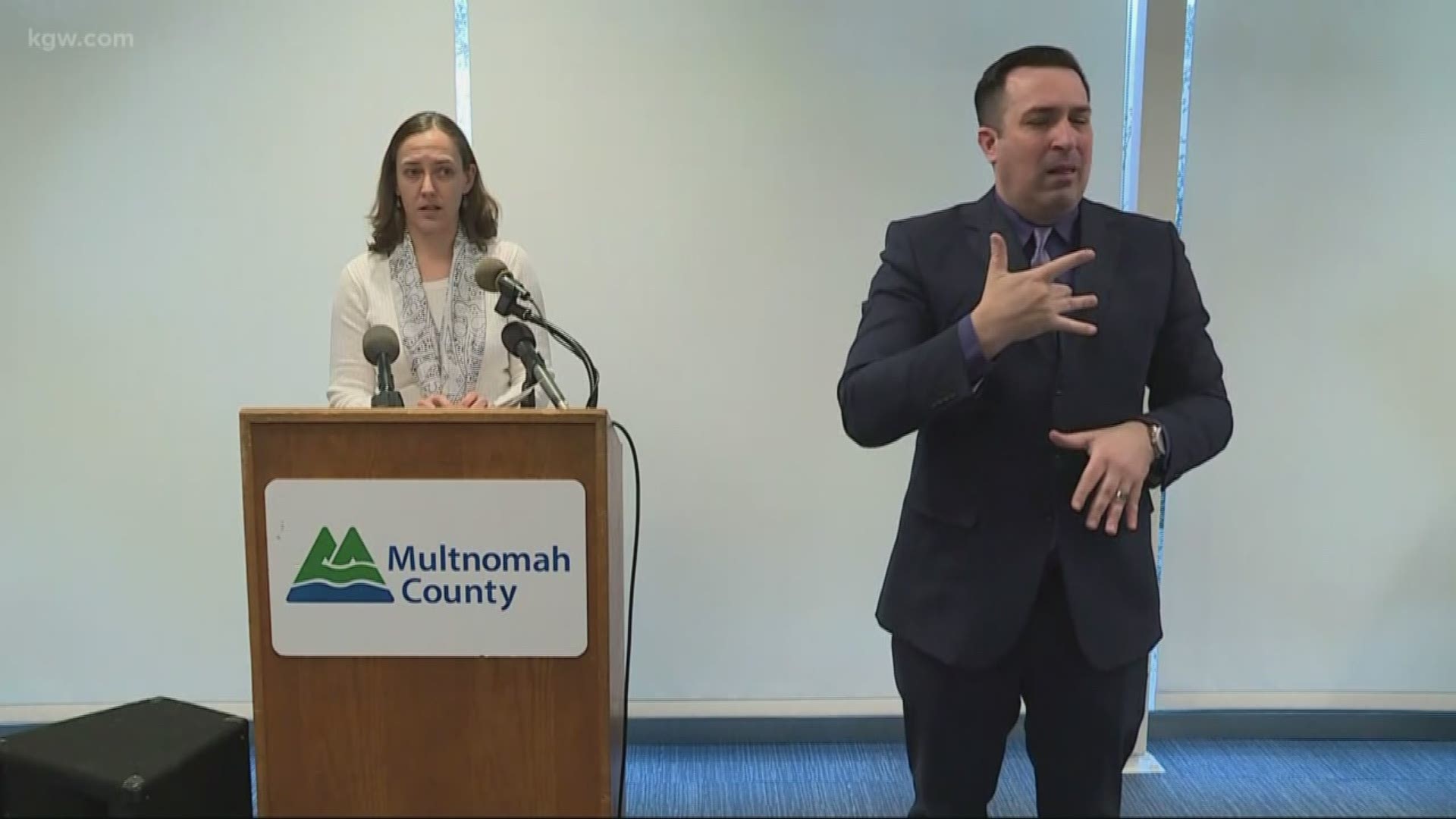PORTLAND, Ore — The term “shelter in place” has been used frequently this week as government leaders take drastic steps and order people to stay indoors and limit time spent outside to what is deemed “essential."
It is an effort to enforce social distancing to curb the spread of the novel coronavirus and prevent further overwhelming of our country's healthcare system.
California Governor Gavin Newsom issued a state-wide order for people to stay home and called on residents to self-isolate to prevent further spread of the virus. Healthcare, government and food industry workers can travel for work, while grocery and hardware stores, gas stations, pharmacies and other “essential” businesses can stay open. In addition, health officials said residents can still go outside to exercise. Los Angeles had issued a “shelter-in-place” order earlier that day, similar to the order from five counties in Northern California.
The shelter-in-place mandate from San Francisco Department of Public Health on March 16 requires that residents stay inside unless they need to leave for essential activities and work until April 7. That order states vulnerable populations must stay home and everyone else is required to do the same except to get food, care for a loved one, access necessary healthcare or go to an essential job. Under the order, it is OK to go outside for walks, runs, hikes or bike rides if you are not in a group and as long as you stay at least six feet away from another person.
It is a misdemeanor offense to violate the mandate and punishable by fine, imprisonment or both. However, police in San Francisco told TIME enforcing the order is a "last resort" and people should use common sense and stay inside.
Oregon Gov. Kate Brown has not ordered Oregonians to shelter in place. She has enacted social distancing measures like shutting down eating and drinking establishments and banning crowds of more than 25 people for at least a month.
When asked when she would issue an order during a press call Friday, the governor said everyone over 60 years old should be socially distancing and isolating themselves.
"I am urging all Oregonians to stay home," Gov. Brown said. "We’ve been saying that for weeks. It particularly applies to most vulnerable Oregonians, those with underlying conditions. If they are not following our recommendations, I will impose more restrictive conditions."
Washington state has not issued a shelter-in-place order or a mandate for people to stay home. Gov. Jay Inslee said, instead, he’s focusing on Washingtonians’ economic problems caused by the pandemic.
The City of Portland came up with a draft plan for a possible order requiring people to stay inside except for essential needs and jobs. Friday, Mayor Ted Wheeler said the city is mulling over a stay-at-home policy, rather than a shelter-in-place policy. If the state acts, however, the city won’t need to issue one.
In a series of tweets, the mayor said the term "shelter-in-place" is both confusing and alarming.
He wrote: "When people hear "shelter in place" they think of measures taken during an earthquake or a lockdown. I can assure you, that is NOT what I am considering."
There is confusion nationally over the term “shelter in place."
The phrase itself is reminiscent of the Cold War or World War II eras and the warning is used during tornadoes, active shooter scenarios or when hazardous chemical or radiological contaminants are in the air. When those shelter-in-place orders are issued, it is dangerous to step outside.
In essence, the shelter-in-place orders we are seeing during the coronavirus pandemic, mean stay home. As mentioned, there are exemptions for “essential” activities, work and needs.
New York Gov. Andrew Cuomo says he is opposed to using the term “shelter in place” to describe his new restrictions Friday. According to the New York Times, Cuomo said "words matter" and described his actions as a way of "closing the valve" or slowing the outbreak.
RELATED: Coronavirus live updates: Illinois and New York join California in ordering residents to stay home
According to the Centers for Disease Control and Prevention (CDC), “shelter in place” means get inside and stay inside. In those cases, the CDC says people need to listen to local media for instructions because directions will depend on that emergency situation.
In general, the CDC and American Red Cross advise in those emergencies, get inside with loved ones, emergency supplies and pets, if possible, find a secure spot in the location where you are, and stay put until officials give you the all-clear and say it’s safe to leave.
The American Red Cross says a shelter-in-place warning is issued when "chemical, biological or radiological contaminants may be released accidentally or intentionally in the environment." In those cases, people should take refuge in a small interior room with no or few windows and doors that can lock.
Ready, a national emergency and disaster preparedness and response public service campaign, draws a distinction between sheltering and sheltering in place. It explains the length of time you’re required to shelter “may be short, such as during a tornado warning, or long, such as during a winter storm or pandemic."
According to Ready, there may be situations when, depending on circumstances and the nature of the disaster, “it is simply best to stay where you are and avoid any uncertainty outside by sheltering in place." While sheltering in place, you may need to create a barrier between you and contaminated air outside as a matter of survival. That is not what is being required of people with the coronavirus pandemic.

